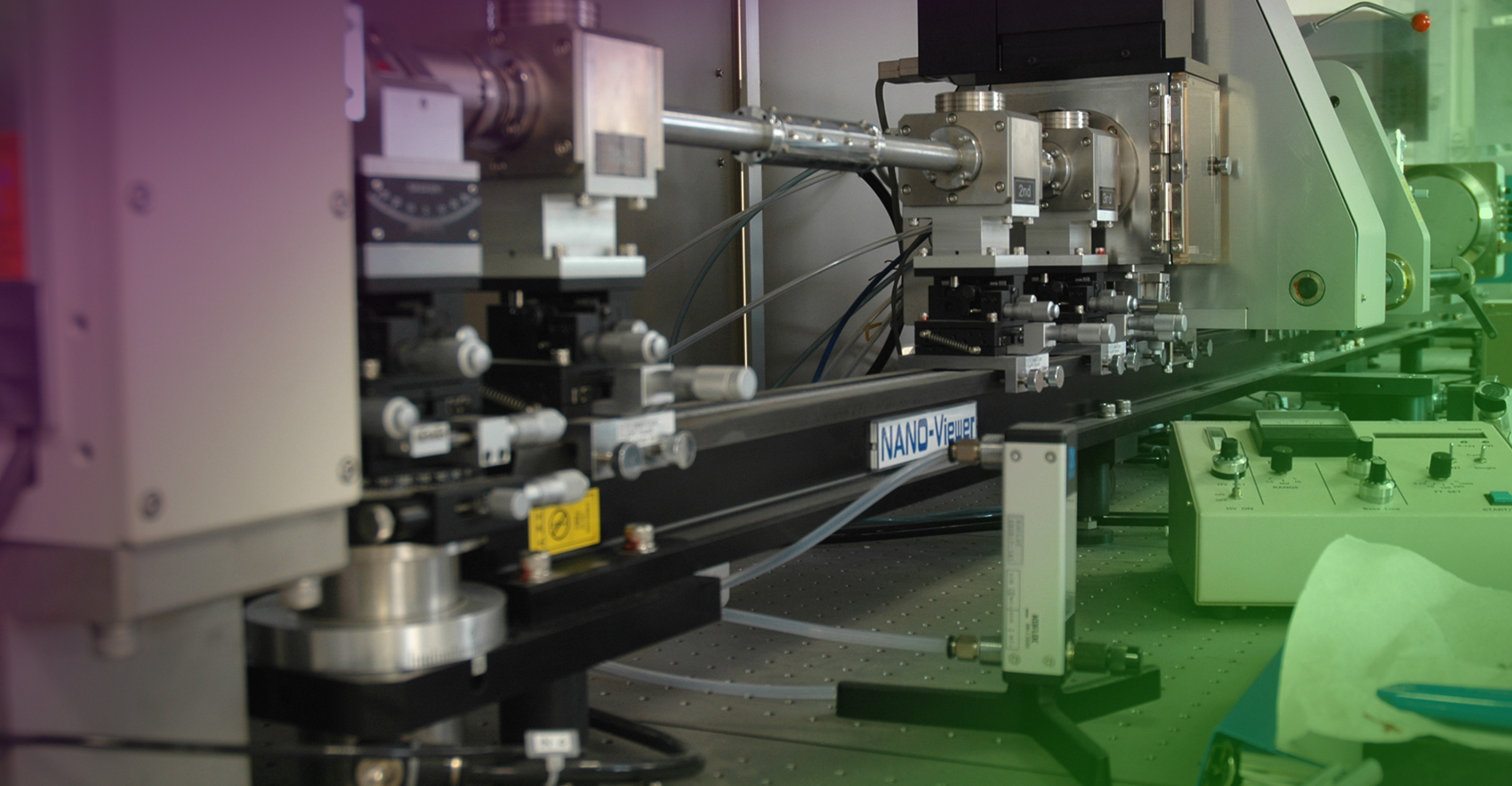
A Q-Sense, E1, Quartz Crystal Microbalance with Dissipation (QCM-D) system is a sensitive interfacial technique to monitor molecules/biomolecules adsorption processes in situ. This instrument is unique due to the capabilities of real time energy dissipation monitoring, frequency and dissipation monitoring of the freely oscillating crystal, fast analysis at 200 data points per second, dynamic range of frequency measurements (5MHz up to 65MHz, 7 total frequencies), and analysis software with the Voigt (viscoelastic), Sauerbrey and kinetic modeling abilities.
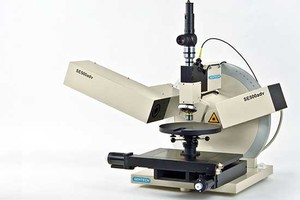
Brewster Angle Microscope with Ellipsometry Imaging (BAM). A unique combination of ultra high contrast microscopy and ellipsometry: a novel analysis tool for film thickness and surface morphology characterization. Applications span from the study of domains and order phenomena in monolayers at liquid-air interface to characterization of ultrathin films on solid supports (silicon, quartz, gold).

Ellipsometry is a non-destructive optical method to characterize ultrathin films (0.1 nm). With our single wavelength (6328Å) nulling ellipsometer the thickness and refractive index of a dielectric film can be readily determined on a variety of reflecting substrates.

Compact atomic force microscope for imaging under dry conditions

Park Systems atomic force microscopy (https://www.parksystems.com) model XE-7, operating in Contact, True Non-Contact® and tapping mode, equipped with temperature control and cell for liquids.

Dimension Icon (Bruker) is a tip-scanning AFM platform allowing nanoscale imaging. The analysis can be conducted in ambient and liquid environments. Depending on the requirements, three main modes with suitable probes are available: (i) contact mode, (ii) tapping mode and (iii) non-contact mode. In addition to the morphology of the samples, a wide variety of properties can be investigated. Nano-electrical properties of the materials with a spatial resolution of the order of 10 nm or less (depending on the AFM probe) can be investigated by means of conductive AFM (c-AFM) and Kelvin Probe Force Microscopy (KPFM). The c-AFM allows to obtain topography and electrical conductivity maps of the samples by using a conductive tip. Furthermore, nanomechanical analysis are available (PeakForce-QNM®) by means of PeakForce Tapping® technology. The flexibility and high resolution of this technique make it suitable for investigations in the fields of molecular engineering, surface chemistry, semiconductors and polymeric material science and cellular biology.

Atomic Force Microscopes operating both in air and in liquid, able to perform images and nanomechanical characterization of materials and molecules. The instruments are located within the facility SPM@ISMN and are accessible upon request
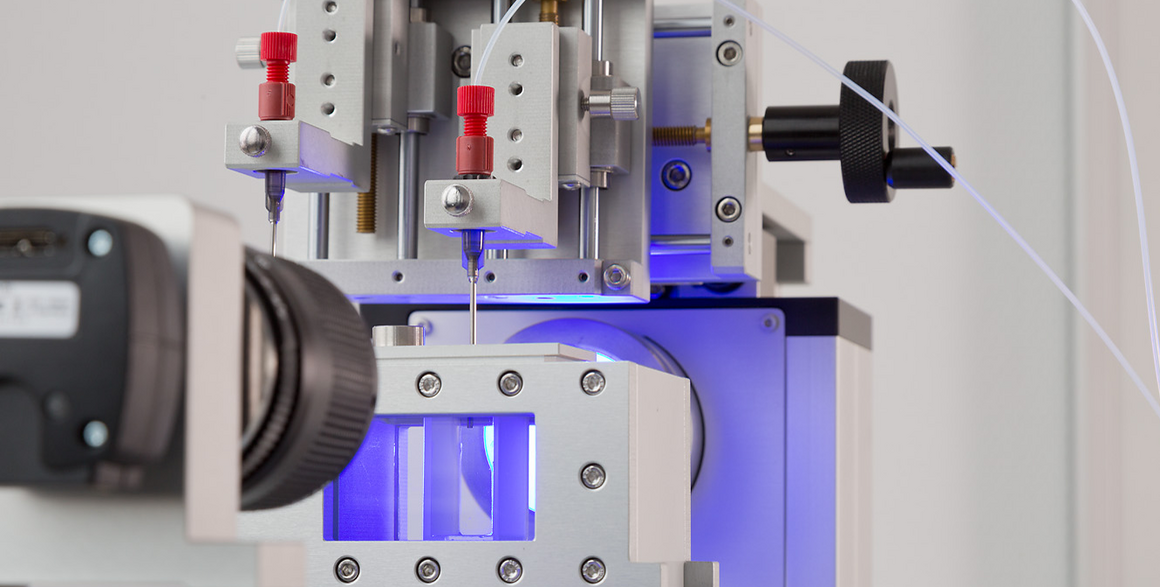
The trough is equipped with 2 compartments for transfer of monolayer between different subphases. This configuration is optimized for the investigation of protein/monolayer interactions and biomembrane and enzyme kinetic reaction studies.
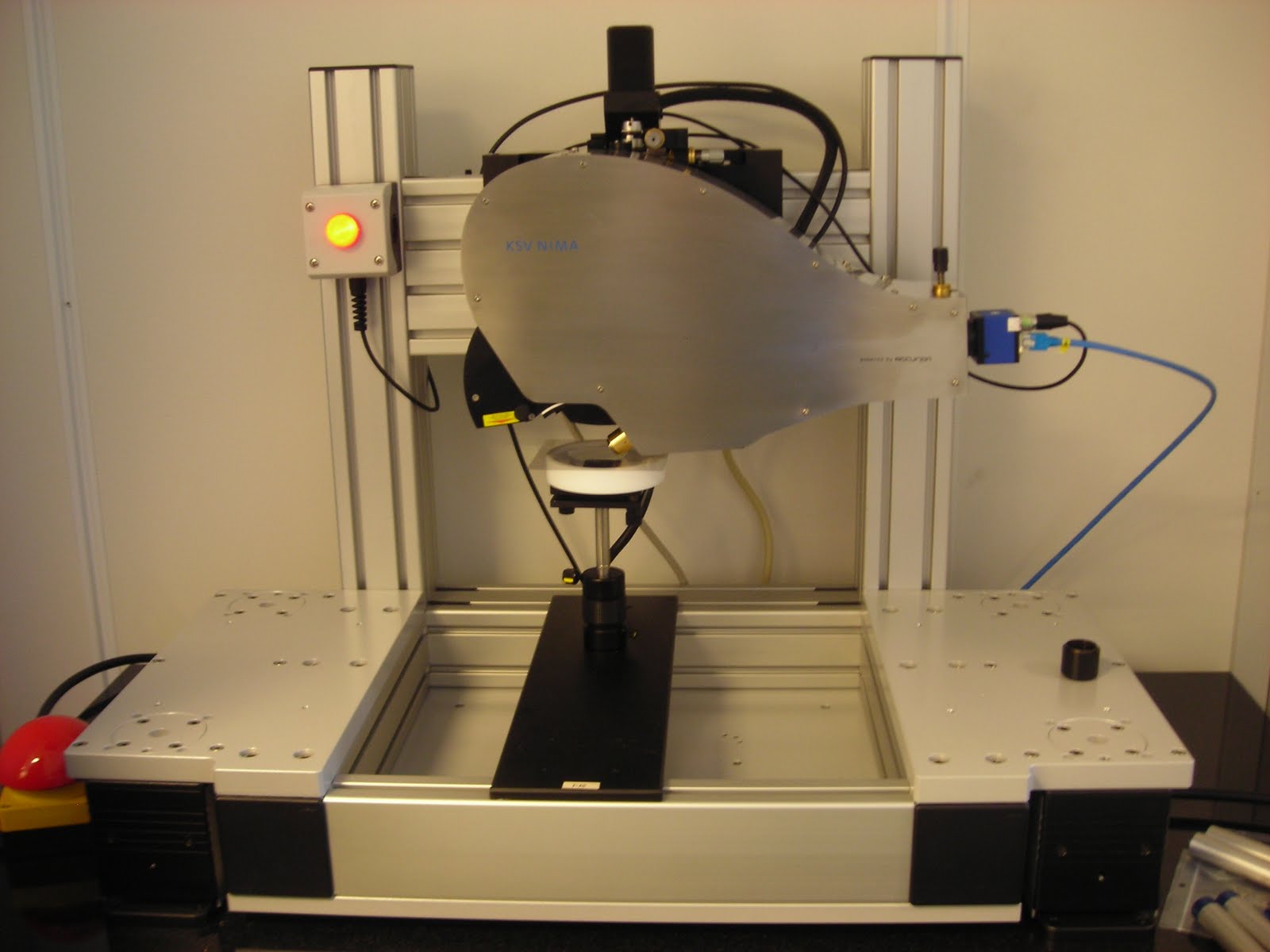
Langmuir Film Balance 702BAM for Brewster angle microscopy NIMA is analytical film balance for use with the Brewster angle microscope. Allows simultaneous observation of monolayer morphology and surface pressure-area isotherms.

Standard continuous compression film balance with a single barrier equipped for the simultaneous measurements of surface pressure and surface potential data. All our instruments are equipped with a thermostatic bath for temperature control of the subphase.
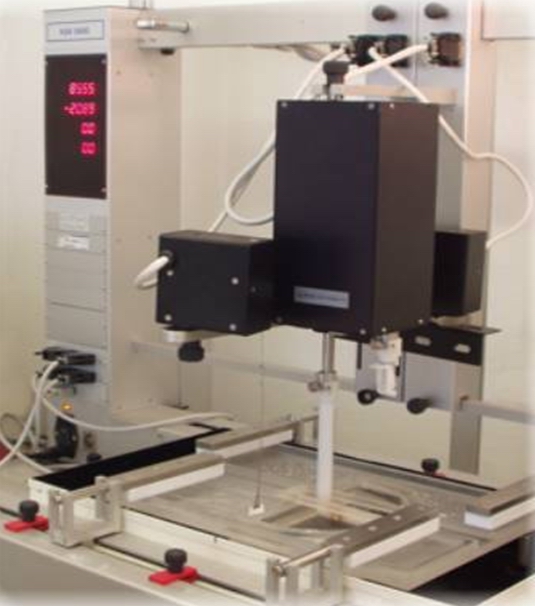
Langmuir-Blodgett instrument for unsupervised deposition of ordered multilayer LB-films. Two separate troughs allow the simultaneous preparation of two different monolayers for alternate LB film deposition.

IT Concepts “The Tracker”. The instrument measures the interface voltage using the hanging drop method on time scales ranging from 500 ms up to the hour scale. The instrument can measure both the static tension at equilibrium and the dynamic tension, through the deformation of the drop and the controlled variation of the area of the drop itself, in order to determine the viscoelastic properties of the interphase. These properties are of great interest in the study of emulsions, foams, microemulsions and, more generally, of self-assembled systems.

Kruss Force Tensiometer. The instrument measures the interphase tension using the Du Nouy ring method, the Wilhelmy plate, or directly using solid surfaces. The instrument is equipped with two automated dispensers for studying the critical micellar concentration of surfactants.
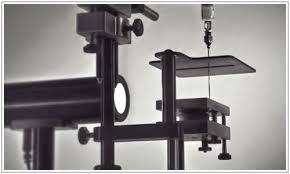
Contact angle measurements are an important tool to characterize the wettability of solids. The instrument is fully software driven - allowing the user to take automated contact angle measurements as a function of time. The instrument is equipped with an Automated Dispenser tool and control pump for single drops for advanced/receding studies. This hydraulic system uses disposable tips for multiple liquid studies and quick changes from one specimen to another.

SPR-Navi is a modular and computer controlled sensing instrument, based on surface plasmon resonance within ~300nm of a sensor surface in real time, label–free monitoring of molecular and bimolecular interactions analysis (binding rate and equilibrium dissociation constants).

The Insplorion Localized Surface Plasmon Resonance (LSPR) spectroscopy is extremely sensitive to changes in the refractive index close to the plasmonic nanoparticles within ~ 50-60 nm. The local refractive index depends on many factors including the solution composition next to the nanoparticles, infinitesimal conformational/orientational changes in adsorbed biomolecules and nanomorphology-determined features.
Consorzio interuniversitario per lo sviluppo dei Sistemi a Grande Interfase
Department of Chemistry, University of Florence - Via della Lastruccia 3 50019 - Sesto Fiorentino (FI)
Fiscal code/VAT ID: 04519240487
PEC : consorzio_csgi@pec.it
Filippo Baldereschi
baldereschi@csgi.unifi.it
055-4573035
Emanuela Grassi
emanuela@csgi.unifi.it
055-4573147
Irene Trapani
trapani@csgi.unifi.it
055-4573036
Manola Trastulli
manola@csgi.unifi.it
055-4573034
Michele Baglioni
webmaster@csgi.unifi.it
055-4573026
Giovanna Poggi
webmaster@csgi.unifi.it
055-4573031
Fabio Nicoli (Website designer)
nicolifabio71@gmail.com

